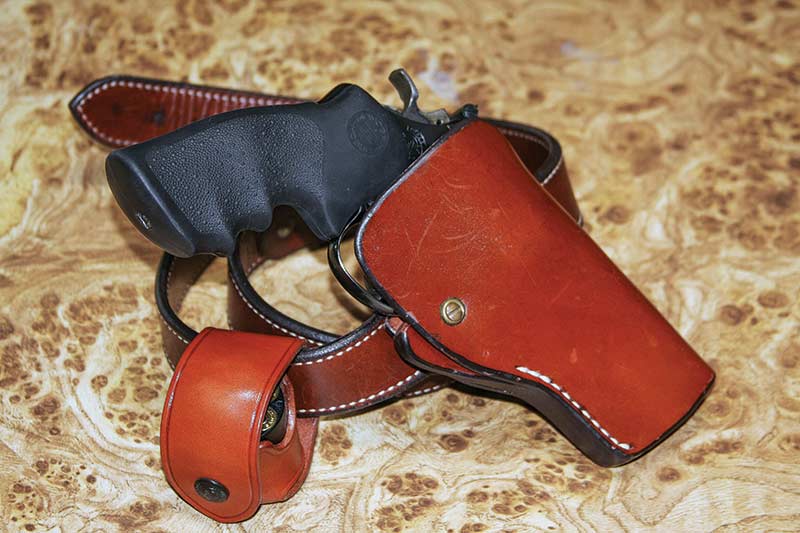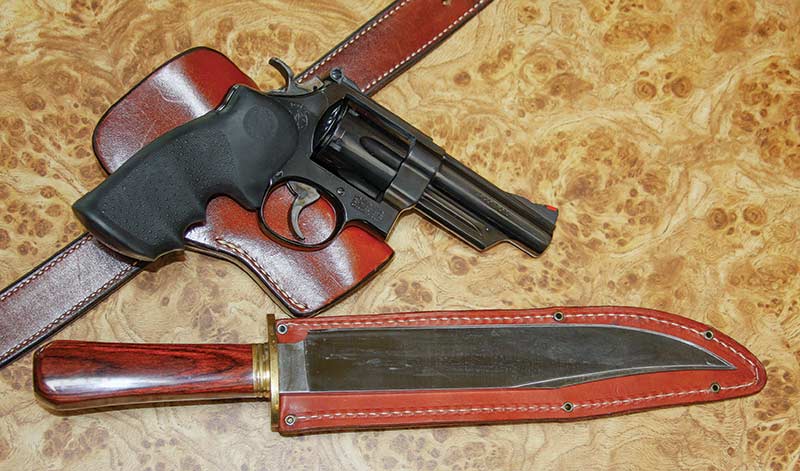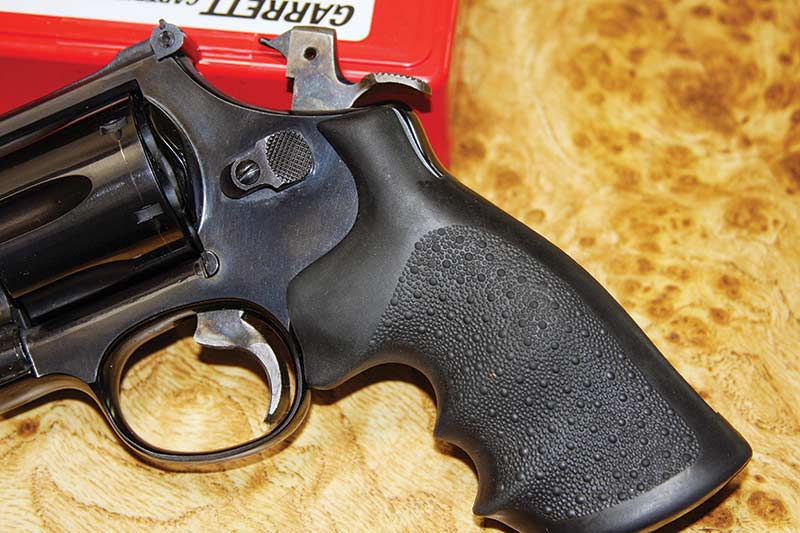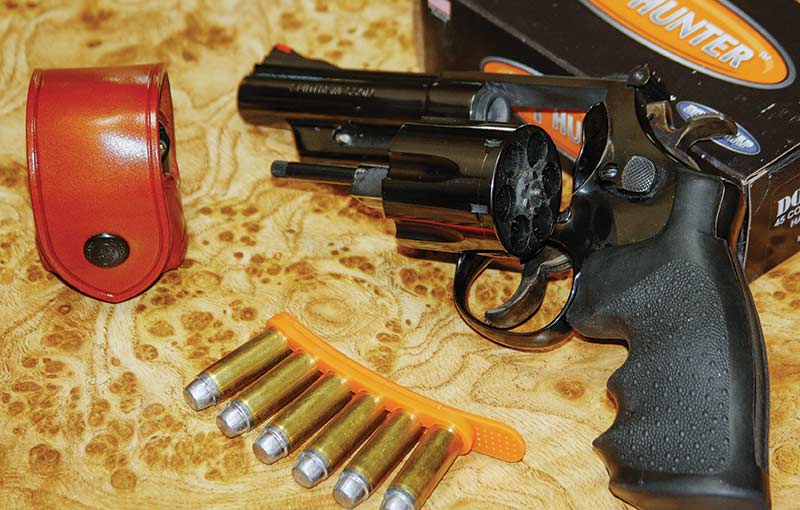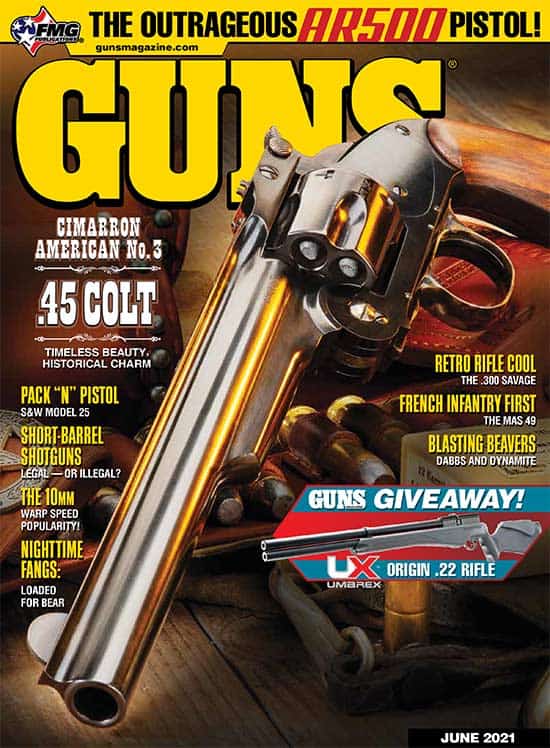Back To Sights
Let’s talk a bit more about the front sight. The top surface of the orange plastic is smooth, meaning it’s quite reflective in bright sunlight. On testing day, the sun was extremely bright, causing a glare off the top of the insert and making it quite difficult to see exactly where the upper edge of the front sight ended so groups tended to expand vertically. While shooting long-range steel in Colorado on a sunlit day, I sprayed the front sight black to cover the orange ramp. When handgun hunting deer, I prefer having the orange strip visible since the most productive hunting is in the lower light levels of early mornings or late afternoons. In addition, it was likely I would be moving in and out of timber.
In a recent writers’ event at Gunsite Academy, I had a chance to work the Fun House with the Model 25. I went through all the drills with the big Smith & Wesson riding comfortably in a Milt Sparks-style strong-side holster shooting DoubleTap 255-grain hard cast semi-wadcutters. Although we “cleared” the house during the daylight hours, changing light conditions became a decisive factor as we went from the bright sunlight of an Arizona afternoon in July to the deeply shaded areas inside the house. As we grow older, our eyes need more light to see well plus we adjust to changing light conditions less quickly.
At first, there were dark targets I couldn’t identify at all. As my eyes adapted, I could see some targets but was unable to determine whether they were holding weapons or not. Once I could tell whether the intruder was armed or not, the orange front sight came into play and I could see well enough to make a decisive shot. Of course the best answer is “always have a flashlight.”
